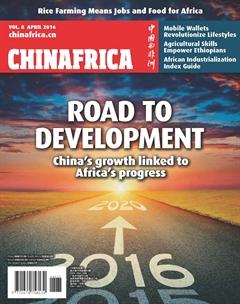Potential for Optimism
By Bob Wekesa
THE annual sessions of Chinas National Peoples Congress, the top legislature, and the National Committee of the Chinese Peoples Political Consultative Conference, the top political advisory body, held in Beijing in March left little doubt that their deliberations and resolutions will have global ramifications.
Sensibilities have revolved 360 degrees. There was a time when China-bashers relished an economic slowdown in China. However, as China goes through the motions of recalibrating its economic modus operandi, the world watches on tenterhooks. One now hears voices of optimism from around the world hoping that China successfully navigates its economic reforms. And Africa is no exception.
In fact one could argue that Africa is, in certain respects, more beholden to good tidings in China than other parts of the world. Over the past decade, the Africa Rise narrative has grown parallel to China becoming the continents foremost trading partner. The main driving force for the fast economic growth on the African continent has been Chinas appetite for mineral resources from resource-rich countries such as South Africa, Zambia, the Democratic Republic of the Congo, Sudan and Nigeria.
Policy shift
One of the policy shifts mulled at the Great Hall of the People is a move away from a labor-intensive, exportoriented economy toward a consumer and innovationdriven economy. The corollary is that there will be less demand for African minerals such as copper, iron ore, coltan, cobalt and platinum.
The economic outlook in the era of the 13th FiveYear Plan (2016-20) looks grim for African countries until one considers the ameliorative plans that can help both Africa and China weather the choppy headwinds.
The signature economic proposal of the Forum on China-Africa Cooperation (FOCAC) Johannesburg Summit was a plan for the industrialization of Africa. In this scheme of things, Chinas overcapacity manufacturing units will be set up in African countries. Aligned to this industrialization plan is the processing of African raw minerals into valuable products for world markets. Add on to this the fact that Africa boasts an untapped youth bulge in need of employment and you see potential for celebrating Chinas economic reform, rather than moaning about it.
The 13th Five-Year Plan is also big on opening up. For South Africa, its BRICS (Brazil, Russia, India, China, South Africa) membership will be fortunate. This is because the opening-up agenda would likely be driven by geopolitical mechanisms such as the BRICS. It has always been understood that South Africas position in the BRICS represents the entire African continents.
Silk Road beneficiaries
The foreign dimension of Chinas opening-up agenda is articulated through the Belt and Road Initiative (the Silk Road Economic Belt and the 21st Century Maritime Silk Road). African countries can expect (or at least lobby) to be included in this gargantuan trade-cum-infrastructural-cultural geo-strategy. Indications are that some African countries have already been incorporated into the initiative.
All the 10 countries on the East African seaboard are often mentioned as natural beneficiaries of the Belt and Road Initiative. Some of them are the sites where ancient Chinese seafarers had landed. These include Kenya, Somalia, Djibouti, Sudan and Egypt, which are included in the cartographic images of the Silk Road. The initiative is one of the areas on which South Africa and China signed bilateral agreements in December.
These are some examples why Chinas 13th Five-Year Plan should be seen with optimism.

